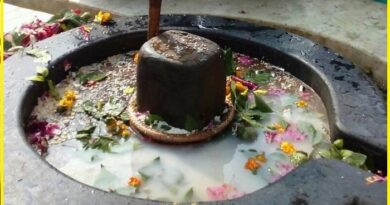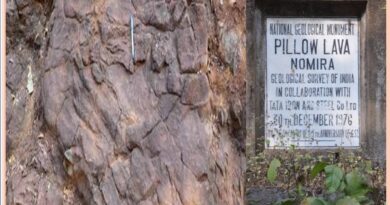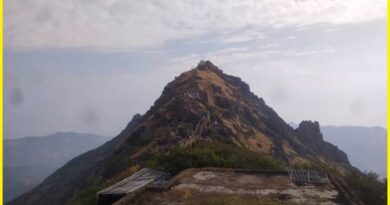Jewels of Jain Heritage: The Udayagiri Caves of Odisha
Udayagiri Caves
The Udayagiri caves are a fascinating archaeological site located near Bhubaneswar in Odisha, India. These caves are ancient rock-cut structures that date back to the 2nd century BCE. They are renowned for their intricate carvings, which depict various religious and secular themes. Udayagiri is part of the larger complex of caves known as the “Khandagiri-Udayagiri.” These caves were carved out of natural rock formations and were used by Jain monks as dwelling places and meditation chambers. The caves served as important religious and educational centers during ancient times.
The caves at Udayagiri are particularly notable for their elaborate sculptures and inscriptions. The carvings depict scenes from Jain mythology, along with images of kings, queens, animals, and geometric patterns. One of the most famous sculptures at Udayagiri is the carving of a female dancer known as the “Navamuni Dancer.” Visitors to Udayagiri can explore the various caves and admire the ancient artwork while also learning about the rich history and cultural significance of the site. It’s a popular destination for tourists, history enthusiasts, and those interested in ancient Indian architecture and art.
1. Khandagiri and Udayagiri Caves
The Khandagiri and Udayagiri caves are twin hills located near Bhubaneswar.
Khandagiri Caves
Khandagiri, meaning “Broken Hill,” comprises 15 caves, while the nearby Udayagiri, meaning “Sunrise Hill,” features 18 caves. These caves were carved out of sandstone rock faces and served as dwelling places for Jain ascetics during ancient times. The caves were initially natural, but later Jain monks carved them into living spaces, meditation cells, and religious sites.
Udayagiri Caves
Udayagiri, situated adjacent to Khandagiri, features larger and more elaborate caves compared to its counterpart. These caves have ornate sculptures depicting various scenes from Jain mythology, along with images of kings, queens, animals, and floral motifs. The famous “Rani Gumpha” (Queen’s Cave) is one of the highlights of Udayagiri, adorned with intricate carvings and inscriptions.
The caves of Khandagiri and Udayagiri are significant not only for their architectural and artistic merit but also for their historical and cultural importance. They offer insights into ancient Jain practices, lifestyle, and religious beliefs. Visitors can explore these caves, marvel at the craftsmanship of the sculptures, and learn about the rich heritage of Odisha. The site is a popular tourist destination and a symbol of Odisha’s rich cultural legacy.

2. Udayagiri Caves History
The history of the Udayagiri caves, located near Bhubaneswar is deeply intertwined with the rich cultural and religious heritage of the region. Origins: The Udayagiri were carved out of sandstone rock faces during the reign of the Mauryan Empire, which extended over large parts of the Indian subcontinent from around the 4th to the 2nd century BCE. They were primarily created as dwelling places and retreats for Jain monks who sought solitude and a conducive environment for meditation and spiritual practices.
Also read- Chilika Lake: Where Nature Paints Its Masterpiece
Jain Influence: Jainism, one of the ancient religions of India, flourished in the region during ancient times. The caves served as important centers for Jain monasticism, providing shelter and a space for religious activities. The Jain monks, known for their ascetic lifestyle, found the natural caves of Udayagiri ideal for their spiritual pursuits. Architectural Evolution: Over the centuries, the caves underwent architectural evolution and artistic embellishment. Skilled artisans carved intricate sculptures and reliefs depicting Jain deities, Tirthankaras (spiritual teachers), and scenes from Jain mythology. The caves also feature inscriptions in Brahmi script, providing valuable historical and linguistic insights.
Patronage: The construction and maintenance of the Udayagiri likely received patronage from various ruling dynasties that governed the region over the centuries, including the Mauryas, Guptas, and later dynasties. Royal patronage played a crucial role in the development and preservation of these ancient sites. Rediscovery and Preservation: The Udayagiri caves, along with the nearby Khandagiri caves, were rediscovered in the 19th century during the British colonial period. Since then, efforts have been made to preserve and protect these historic sites. Archaeological surveys, conservation projects, and tourism initiatives have been undertaken to safeguard the cultural and architectural heritage of the caves.
Tourism and Cultural Significance: Today, the Udayagiri attracts tourists, scholars, and pilgrims from across the globe. They stand as a testament to the artistic prowess, religious tolerance, and cultural diversity of ancient India. The caves serve as living monuments to Jainism and continue to inspire awe and reverence among visitors.
3. Puri to Udayagiri Caves Distance
The distance between Puri and the Caves near Bhubaneswar in Odisha, India, is approximately 70 kilometers by road. The travel time can vary depending on the mode of transportation and traffic conditions, but typically it takes around 1.5 to 2 hours to reach Udayagiri Caves from Puri by car.



